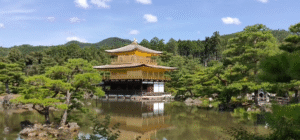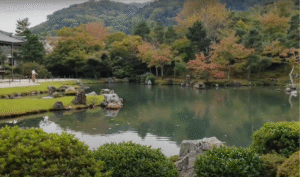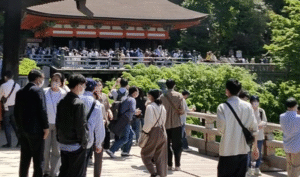Kyoto’s Fushimi Inari Taisha Shrine is a premier shrine in Japan, famous for its thousands of vermilion torii gates. This article explains in detail the shrine’s history, highlights, and points to keep in mind when visiting. It also covers access routes and surrounding information so that even first-time visitors can worship with ease. Please use this guide to deepen your understanding of Fushimi Inari Taisha and fully enjoy your visit.
What is Fushimi Inari Taisha? History and Origins
Fushimi Inari Taisha is located in Fushimi Ward, Kyoto City, and according to legend, was established around 711 during the Nara period. It is one of Japan’s representative ancient shrines, boasting a long history as the central site of Inari worship. It is known as the head shrine of approximately 30,000 Inari shrines nationwide.
The main deity worshiped here is Uka no Mitama no Okami, believed to bring abundant harvests and prosperous business. Numerous fox statues, considered messengers of the Inari deity, can be seen throughout the shrine, symbolizing Fushimi Inari Taisha.
The shrine plays an important role not only as a place of worship but also as a cultural and historical landmark in Japan. It attracts many visitors throughout the year, preserving its religious and cultural significance to this day.
Highlights of Fushimi Inari Taisha
The biggest attraction of Fushimi Inari Taisha is the “Senbon Torii” (thousands of torii gates) — vermilion gates that line a path from the main shrine up to the summit of Mount Inari. Visitors can experience walking through a tunnel-like pathway formed by these gates. The torii gates are donations from companies and individuals, each inscribed with their names.
Around the main shrine, visitors can enjoy traditional shrine architecture such as the beautiful Kaguraden (dance hall) and Haiden (worship hall). There are also souvenir shops and eateries within the grounds where visitors can enjoy Kyoto’s local flavors during their visit.
At the Okusha Worship Hall, there is a stone called “Omokaru-ishi” used for a wish-fulfillment fortune-telling experience: if the stone feels light when lifted, it is said your wish will come true, although this perception varies from person to person.
Additionally, seasonal festivals and illumination events take place throughout the year, offering new discoveries on every visit.
Access and How to Worship at Fushimi Inari Taisha
Fushimi Inari Taisha is located in Fushimi Ward, Kyoto City, and is easily accessible from Kyoto Station by train or bus within approximately 5 to 10 minutes. The most convenient station is JR Nara Line’s “Inari Station,” where you can see the shrine’s torii gates immediately upon exiting. The Keihan Electric Railway’s “Fushimi Inari Station” is also within walking distance.
If visiting by car, there are several paid parking lots nearby, but congestion is expected on weekends and during tourist seasons, so using public transportation is recommended.
Visiting early in the morning or in the late afternoon when it is less crowded allows for a more relaxed atmosphere. The hike to the summit typically takes about 1 to 1.5 hours, but planning for around 2 hours is advised for a leisurely experience. Wearing comfortable shoes and staying hydrated is recommended.
The proper worship etiquette at the main shrine is “two bows, two claps, one bow.” Please follow the signs within the shrine grounds and maintain respectful manners during your visit.
Multilingual pamphlets are available in Japanese, English, Chinese, Korean, and other major languages, and audio guides can be used.






コメント
コメント一覧 (1件)
テストテスト